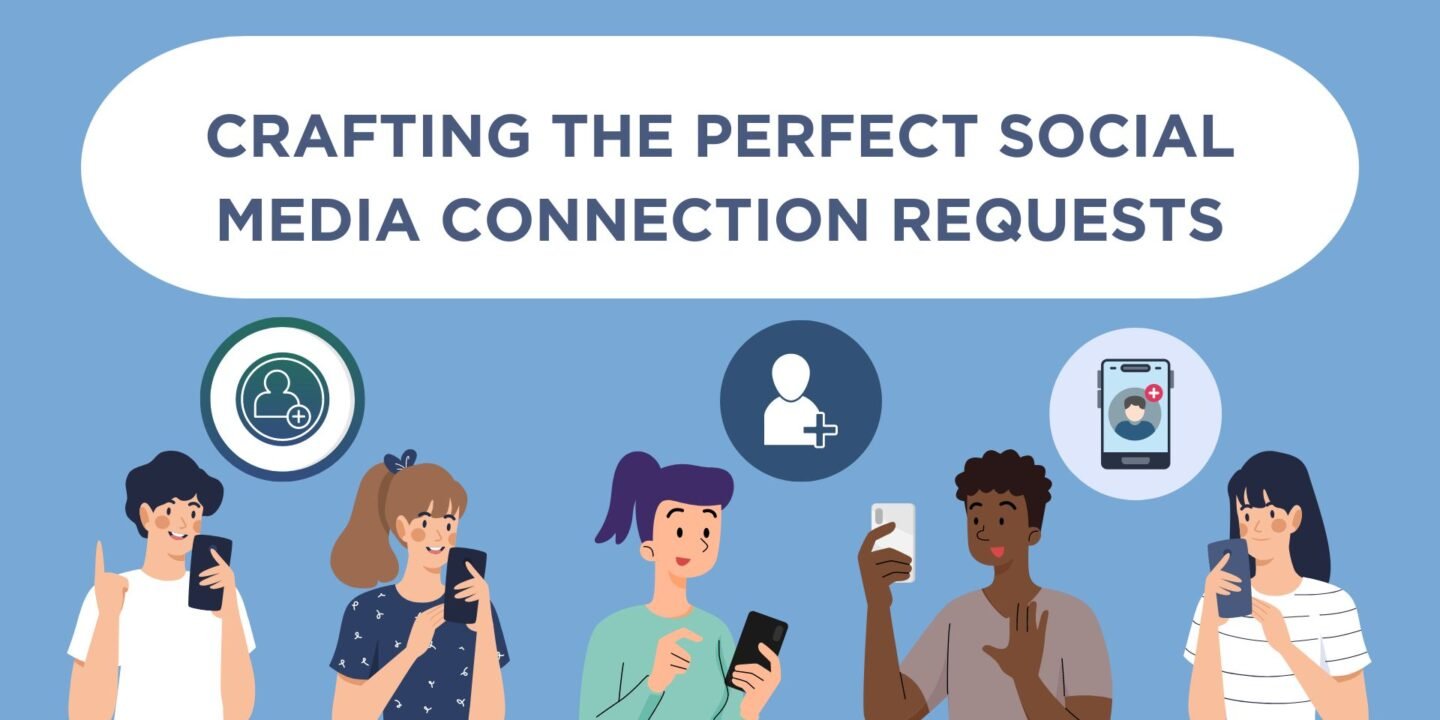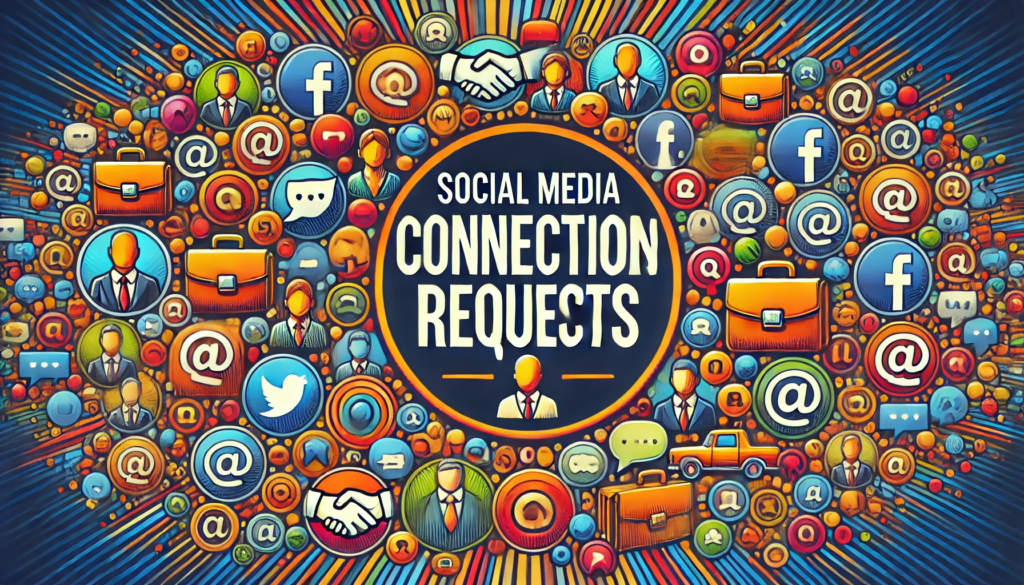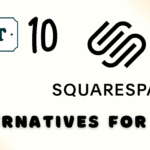
Connecting with people on social media is not exactly rocket science, but it’s also not as simple as hitting the “connect” button and calling it a day. The way you reach out to someone online can make or break how they view you. You want to stand out, but not in a bad way—nobody likes spammy or pushy messages. So, what is the best way to approach social media connection requests when you’re trying to build a professional network? Let’s talk about some things you should definitely do and a few things you should avoid at all costs.
What is a Social Media Connection Request?

In simple terms, a social media connection request is when you reach out to someone on a platform like LinkedIn, Facebook, or even Instagram to connect with them. It’s your way of saying, “Hey, I’d like to be part of your network.” These requests are often used for building professional relationships, finding opportunities, or just growing your circle of contacts in your industry.
When someone accepts your request, they agree to share their updates, posts, and possibly direct messages with you. It’s a two-way street, and how you handle this request can set the tone for future interactions.
Why Send a Connection Request?
The reasons for sending connection requests vary, but they all come down to one thing: building relationships. Here are some key reasons why people send these requests:
- Professional Growth: Connecting with industry leaders, potential employers, or colleagues to advance your career.
- Opportunities: Finding collaborations, job openings, or business ventures through your network.
- Sharing Expertise: Engaging with others who share your interests, allowing for the exchange of ideas and knowledge.
- Expanding Your Reach: Growing your audience or client base, especially for freelancers, entrepreneurs, and businesses.
The Dos and Don’ts of Sending Social Media Connection Requests
Here are the key dos and don’ts to follow when reaching out to potential connections on social media:
The Dos
- Do Write a Personal Message
You wouldn’t approach anyone at a networking event, hand him or her a business card, and walk away without a word, right? Sending a generic, no-context connection request online is sort of the same thing. If you’re reaching out to someone, take a few minutes to write a short, personal message. It doesn’t need to be uber formal or complicated. Just mention why you’re connecting. Maybe you saw them post something interesting, or you work in a similar industry. Even something as simple as “Hi, I came across your profile and thought we do a lot of similar things in our industries—let’s connect!” can go a long way.
- Do Your Research Before You Hit Connect
Before hitting that connection request, spend a couple of minutes actually looking at their profile. What do they do? What are they posting about? It helps to know a bit about the person before you reach out. This provides something to mention when personalising your message. If they have very recently posted an article you have enjoyed, let them know. “I came across your post on digital marketing—great insights!” will let them know you’re paying attention.
- Do Offer Value
Here’s the thing about networking—it’s not all about what you can get. It’s a two-way street. Every time you are reaching out to connect, think of how you can add value. You may have experiences or expertise that complement your work. For instance, if you are a graphic designer and you find that they are a content developer, offer your services to collaborate on visuals for their blog posts. It doesn’t need to be huge; offering anything can make your connection feel more mutual and less transactional in feel and nature.
- Do Keep It Friendly yet Professional
One doesn’t necessarily need to be too formal; likewise, one should not be too casual either. You want to be approachable yet professional. The tone should be friendly with regard to respect. Something like, “I’d love to connect and see how we can share ideas!” is warm without being overfriendly.
- Do Follow Up (But Don’t Overdo It)
Once someone accepts your request, it is a good idea to send a quick thank you or follow-up message. Just connect and disappear—not a good idea at all. You needn’t be over-aggressive, yet just a simple “Thanks for connecting! Would love to hear more about what you’re working on these days” can keep the conversation going.
- Do Engage With Their Content
Building a professional network is not all about adding connections, but rather it’s about building engagement with them. One easy way to do this is by liking their posts or leaving comments about what they’re sharing. When people see that you are genuinely interested in what they are doing, it deepens the relationship. It’s not always about agreeing. Sometimes, a thought-provoking question or different perspective can be just as useful.
The Don’ts
- Don’t Send a Blank Request
It may seem like the simplest thing in the world just to hit that connect button and hope for the best, but it usually doesn’t work. For anyone, when they get a connection request without a message or context, it feels impersonal. Most people won’t accept a connection request from someone they don’t know without a reason, so don’t skip over adding a personal message.
- Don’t Be Too Pushy or Salesy
We’ve all been there—you accept someone’s connection request, and in the blink of an eye, they’re trying to sell you something. It’s one of the fastest, most effective ways to lose someone’s interest. Don’t jump straight into selling yourself or your services. End. Then, later on, if there is to be mutual benefit, that is great. But let things take their natural course rather than just making it forceful right from the start.
- Do Not Expect Immediate Results
Networking takes time. Connecting to someone today does not mean they will offer you a job, refer clients to you, or respond to your message the very same day. Practice patience. Relationships build up over time, and the benefits from networking often come from unexpected quarters. Be more worried about making quality connections, and the returns will take care of themselves.
- Don’t Overwhelm Them with Messages
Once you’re connected, you don’t need to flood their inbox with messages. People are busy, and while it’s nice to stay in touch, a message every other day comes off as needy or a pain. Give them time to respond, if they will at all. It is perfectly fine to follow up after a week or two if you haven’t heard back; just don’t overdo it.
- Remember to Refresh Your Own Profile
An easy first step is making sure your own profile is looking good before you start distributing connection requests. If you are connecting with people and your profile appears outdated or unprofessional, they will not feel comfortable accepting you. Keep your profile updated with your latest role, skills, and any relevant achievements that show that you mean business about your professional presence.
- Don’t Make Networking a Numbers Game
Sure, it’s tempting to try and connect with as many people as you can, but networking is about quality, not quantity. Having hundreds of connections is pointless if none of them count. Set your sights on building relationships with those people who match your values, interests, or goals. Knowing a thousand random acquaintances that you hardly ever speak to means so much more than a more limited network of active connections.
Building Lasting Connections: Quality Over Quantity
When it comes to professional networking, it’s not about the number of connections you have but the quality of those relationships. A large network is meaningless if you never engage with the people in it. Be selective in who you connect with and make an effort to nurture those relationships over time.
For example, instead of trying to connect with every executive in your industry, focus on individuals with whom you share common ground, mutual interests, or complementary skills. Building a smaller, more engaged network of professionals you actively engage with is far more valuable than having thousands of distant, disengaged connections.
Maintaining Professional Etiquette
Lastly, always maintain professionalism in your online interactions. Whether it’s commenting on someone’s post, participating in a group discussion, or sending a message, how you communicate reflects on your personal brand. Avoid making controversial or inappropriate comments, and always keep the conversation respectful, even if you disagree.
It’s also important to be patient and understanding. Not every connection will lead to an immediate opportunity, and not every interaction will go as planned. However, by maintaining a respectful and consistent approach, you’ll position yourself as someone worth connecting with.
Wrapping It Up
Building a network on social media on a professional level is all about real and natural connections. It is not a race for who has the most contacts, and it is definitely not a competition in sending impersonal requests to random people. The key is to be thoughtful, add value, and build relationships that extend beyond the connection. Next time you go to click ‘connect’, think about how you will make that interaction meaningful. Personalise a message, offer value, or engage the person you’re connecting to. With time, those meagre gestures can build big opportunities and great professional relationships.








No Comments